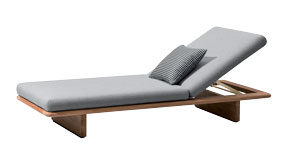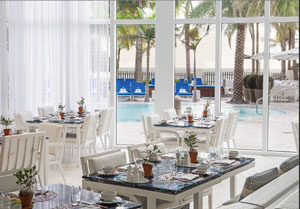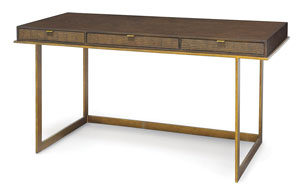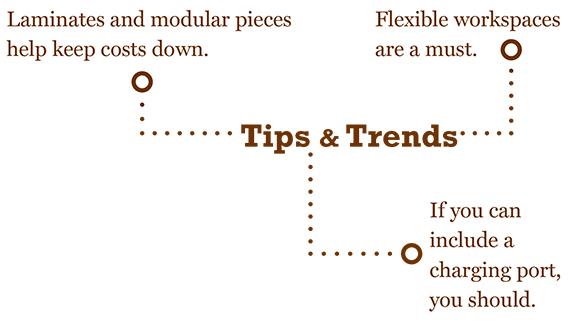You can never have a guestroom without furniture, but that doesn’t mean furniture trends remain stagnant over the years. The industry is constantly evolving in its approach, and this year is proving to be no different.

The Kettal Mesh Deckchair, designed by Patricia Urquiola for Kettal, is part of the Kettal Mesh collection. Kettal Mesh combines natural and industrial materials, hard and soft surfaces, and transparent and opaque volumes to create outdoor furniture based on contrasts.
Tammy Miller, principal, Alternate Resources, noted that furniture is moving “toward modular pieces that result in less—less size, less bulk, less drawers, less scale and less installation. Many pieces can be shipped flat and be field assembled, reducing space requirements and, therefore, cost in shipping and storage.”
As the guestroom becomes more minimal in style, the change in furniture options alters the space completely. “There is a movement toward wanting furniture pieces to seem architecturally built-in as opposed to separate pieces. Desks are being minimized, and now there are other options for the desk,” said Hannah Yon, an interior designer with Baskervill. “At Marriott Modern, for instance, you have a chaise lounge off to the side, so it’s a flexible workspace, as opposed to one area you go with your laptop. Flexibility, in terms of furniture, is definitely a trend.”

The Michael Wolk for Pavilion Furniture collection, featured at resorts such as The St. Regis Bal Harbour Resort (shown), consists of modern lounge chairs and sofas, ottomans, dining and cocktail tables, and love seats and chaise lounges. . The collection reflects the blue and white colors of Greece.
Furniture finishes are just as important as the space the pieces go in. Yon sees more “softer-handed fabrics, more velvet and plusher-feeling fabrics,” elevating the guestroom experience.
“We’re still seeing warmer metal tones and finishes as well as a Danish Modern/Scandinavian influence,” said Angela Denney, VP of interior design at FRCH Design Worldwide’s Hospitality Studio. “Also, clients have asked for items that look like wood but are actually made of metal.”
“In terms of materials, there is a move back to laminates, which are much less expensive and durable,” Miller said. “These aren’t our grandparents’ laminates, as the quality in both design and functionality has come so far. Many lighter and easier-to-install options are available, which eliminates the traditional brown seams and mimics more expensive stones. The perfect application for laminate is the mobile ‘desk,’ which is a key element of many guestrooms and is being used in ways other than the traditional desk.”
Furniture is also fusing with technology. “There are more and more pieces that include built-in power ports,” Denney said. “It’s almost a given that if an outlet or USB port can be included, it’s a must-have.”
Technological innovations will also play a role in furniture design, Denney predicts. “It will be interesting to see what further developments come about with 3D printing,” she said. “We’ve seen a few things come out, but not many. It will also boil down to price point and if it will hold up from a durability standpoint.”

Palecek’s Lenox desk features a solid metal frame finished in brass tones with a solid wood top in a walnut finish.
Kristen Cary, interior designer at Baskervill, is also looking toward the next trend in furniture: the expansion of the outdoor sector. “Outdoor furniture will be fun to see in the next couple of years,” she said. “It’s finally changing into something that looks more like living-room furniture. It looks more comfortable. It’s a great way for us to transition these indoor/outdoor bars. We don’t have to sacrifice our design to have this great space.” On the whole, Yon predicts furniture pieces will increasingly feel residential and approachable, both in the guestroom and out by the pool.
If one factor remains the same in furniture design, it’s durability. “When we design a guestroom, the casegoods are going to be there supposedly for eight years,” said Yon. “Anything that can transcend time is appealing to us.”
Durability does not just apply to quality of construction, either. “Typically, I look for more minimalist pieces,” Yon continued. “We’ll put more bold geometric or colorful fabrics on the accessories that can be changed out a bit easier.” Design that transcends trends will always withstand the test of time. –


